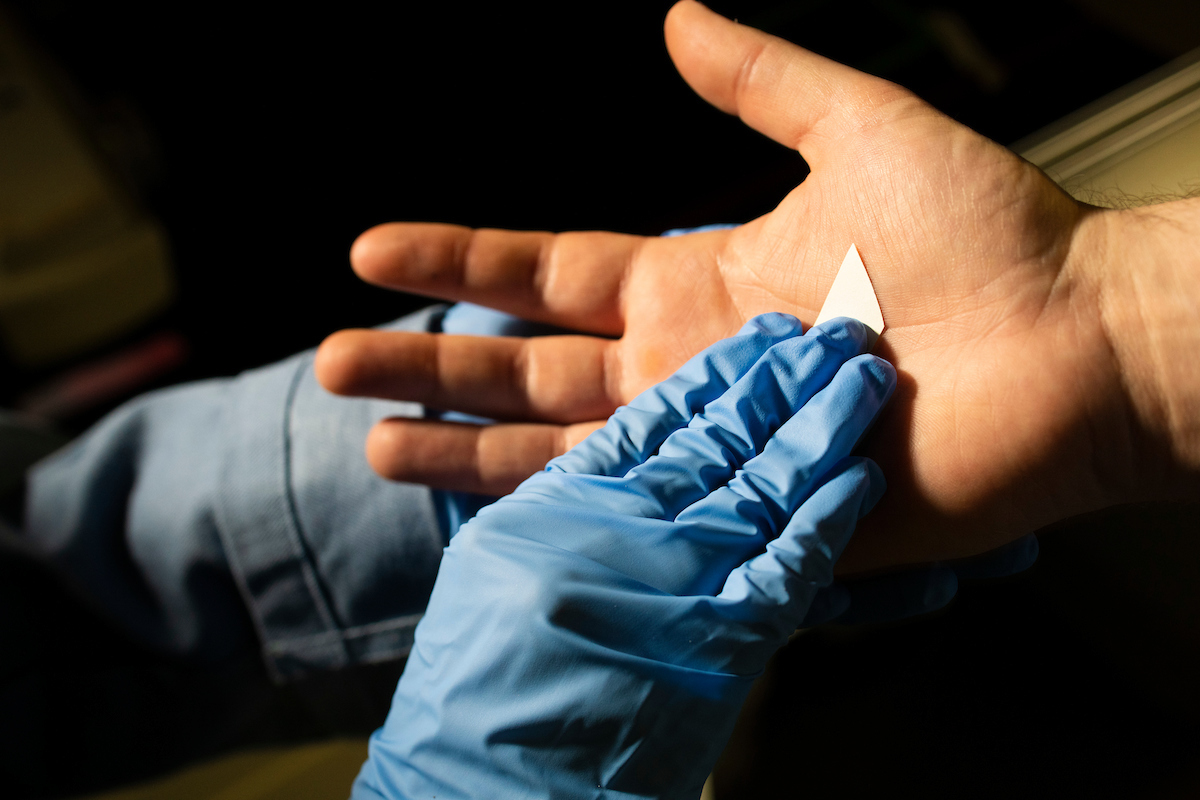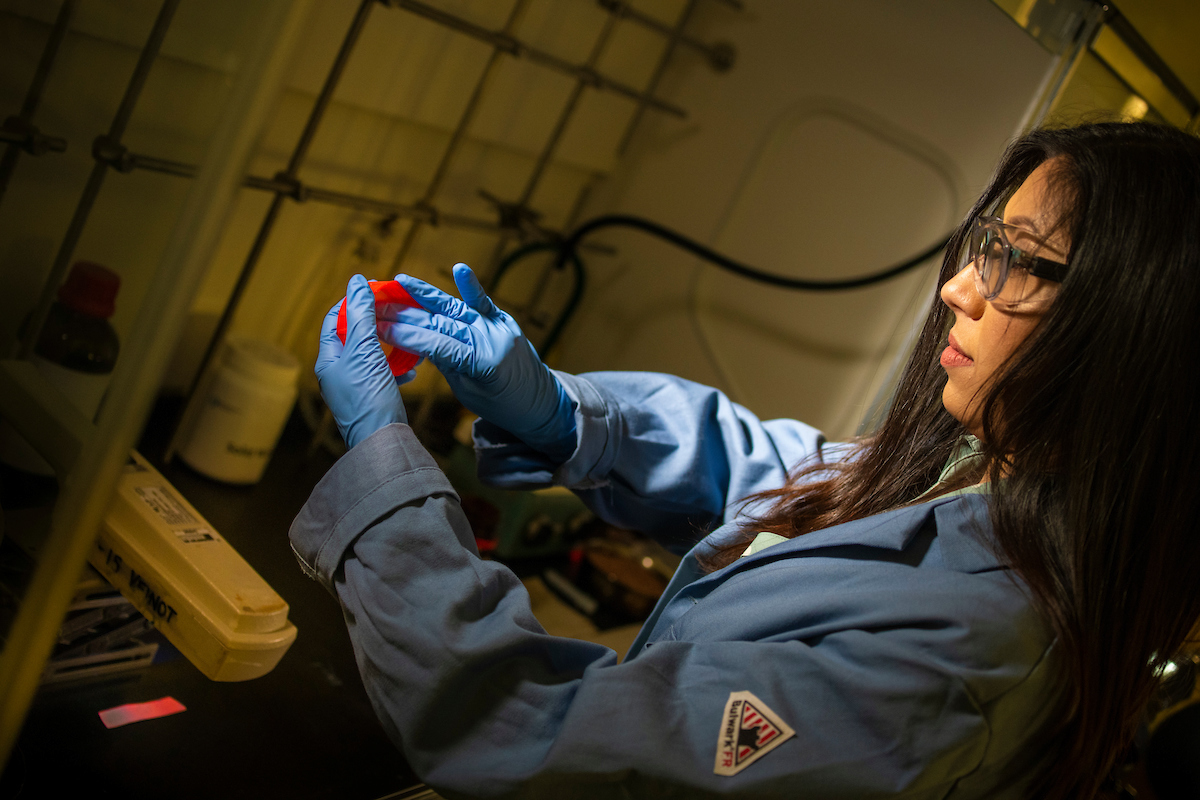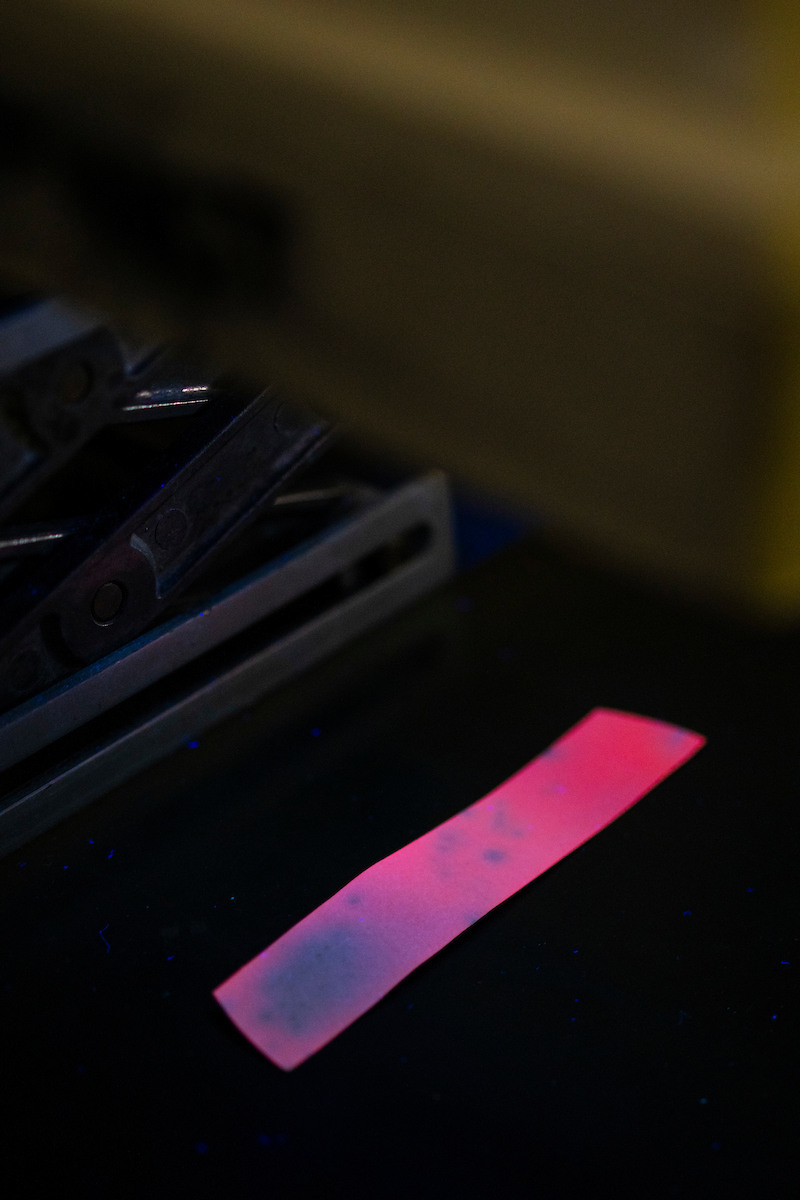Everything's bigger in Texas, or so the saying goes. But for one Texan who now calls Edmonton home, it's the little things that count. Really little. To the nanoscale, in fact. And her explosive discovery of something super small is adding up to really big possibilities that could soon revolutionize global security screening.
Christina Gonzalez ('17 PhD) followed a pretty typical graduate student journey. Get curious. Ask questions. Explore all possible answers. Present a poster or two. Publish the results. Build citations and scientific impact. And pursue employment. But for Gonzalez, that last step was anything but typical.
Around the time of her graduation, her former PhD supervisor, Jon Veinot (chemistry), happened to be starting a spinoff company, Applied Quantum Materials (AQM). AQM focused on heavymetal-free, biocompatible silicon quantum dots and semiconductor nanoparticles for a broad range of applications in sensing, energy, displays, security, and bio-imaging. And Veinot's co-founder and AQM CEO, David Antoniuk ('83 PhD, Eng), was looking for innovative ideas to commercialize.
A fortuitous wander down the hallway and a glance at one of those aforementioned research posters out of Veinot's group piqued Antoniuk's curiosity. So much so that he contacted Gonzalez to offer her employment with AQM to commercialize her findings.
"During my PhD studies, we tested our silicon quantum dots for their response towards different explosive compounds, like RDX, PETN, and the more commonly known TNT," Gonzalez says of her research.
While their technology is still a few steps away from commercialization, the publicity generated earlier this year for her work stimulated interest from multiple partners across North America, which is allowing Gonzalez and AQM to optimize parameters to negate false positives caused by temperature and other environmental factors.
While the science behind it is anything but, the application is simple, only requiring a handheld UV light held up to a strip of paper. If it glows, you're good to go. If not, that simple chemical reaction indicates traces of an explosive material.
Glow and go
"What we found is if we introduced one of those explosive compounds at the start, we would see that the glowing luminescence characteristic of silicon nanocrystals would quench, or turn off, in the presence of the explosive substances. The silicon nanocrystals glow a red orange in UV light, but when you add the explosive, they don't glow anymore. It causes them to dim or turn off."
While her undergraduate and master's work focused on analytical chemistry and using nanoparticles for water remediation, Gonzalez said it was the nanoparticles themselves that sparked her interest in pursuing PhD studies. She was drawn from her home in El Paso, Texas, to the University of Alberta, known for its strong nanocharacterization facilities and multiple faculty members within the chemistry department renowned for their work in nanomaterials.
While she had her sights set on becoming a research scientist after graduation, Gonzalez had no idea that she could continue pursuing her research passion while also working with a burgeoning startup, one so promising that it recently received a nearly half-million-dollar stamp of approval from Alberta Innovates. (That grant was for solar windows, demonstrative of the depths and breadth of potential application for AQM's innovations.) With that announcement in February, followed by an explosion of mainstream media interest in Gonzalez's project, the future is glowing for AQM.
In addition to Veinot and Antoniuk, AQM employs four scientists, all former students of Veinot's.
"Commercialization ventures like AQM reach far beyond making money from innovation," says Veinot. "They simultaneously increase the visibility and impact of U of A research while offering U of A graduates the invaluable opportunity to witness technologies they developed during their academic studies move from idea to reality. This experience puts everything into context and fosters an enthusiasm that cannot be realized through any other way."
Inner workings
"It's exciting to know I'm the co-inventor of this technology that could be implemented in so many different avenues," says Gonzalez. "It was unexpected. I didn't foresee myself in a spinoff. A lot of students don't have the opportunity to commercialize their research."
Back in the lab, Gonzalez is using the opportunity to redefine detection of explosives. In addition to obvious applications for use in airport screening to replace the cumbersome and time-consuming technology currently in use, the AQM team have their eye on mobile applications including inspections of vehicles used to transport dignitaries or of podiums used by orators, scenarios that might benefit from a portable, more efficient technology.
"We are taking advantage of the fact that silicon nanocrystals still glow, even if they're on paper. If you look under UV light after swiping materials such as hands, backpacks, laptops, or other surfaces that may have come into contact with explosives, if there's regions of the paper that aren't glowing anymore, it indicates there is an explosive present. AQM's quantum dot sensor can detect trace amounts of explosives in the nanogram range. To put that into perspective, a fingerprint can pick up 100 micrograms. So we are detecting explosive compounds more than 1,000 times less."


